Primary (Voting) Members
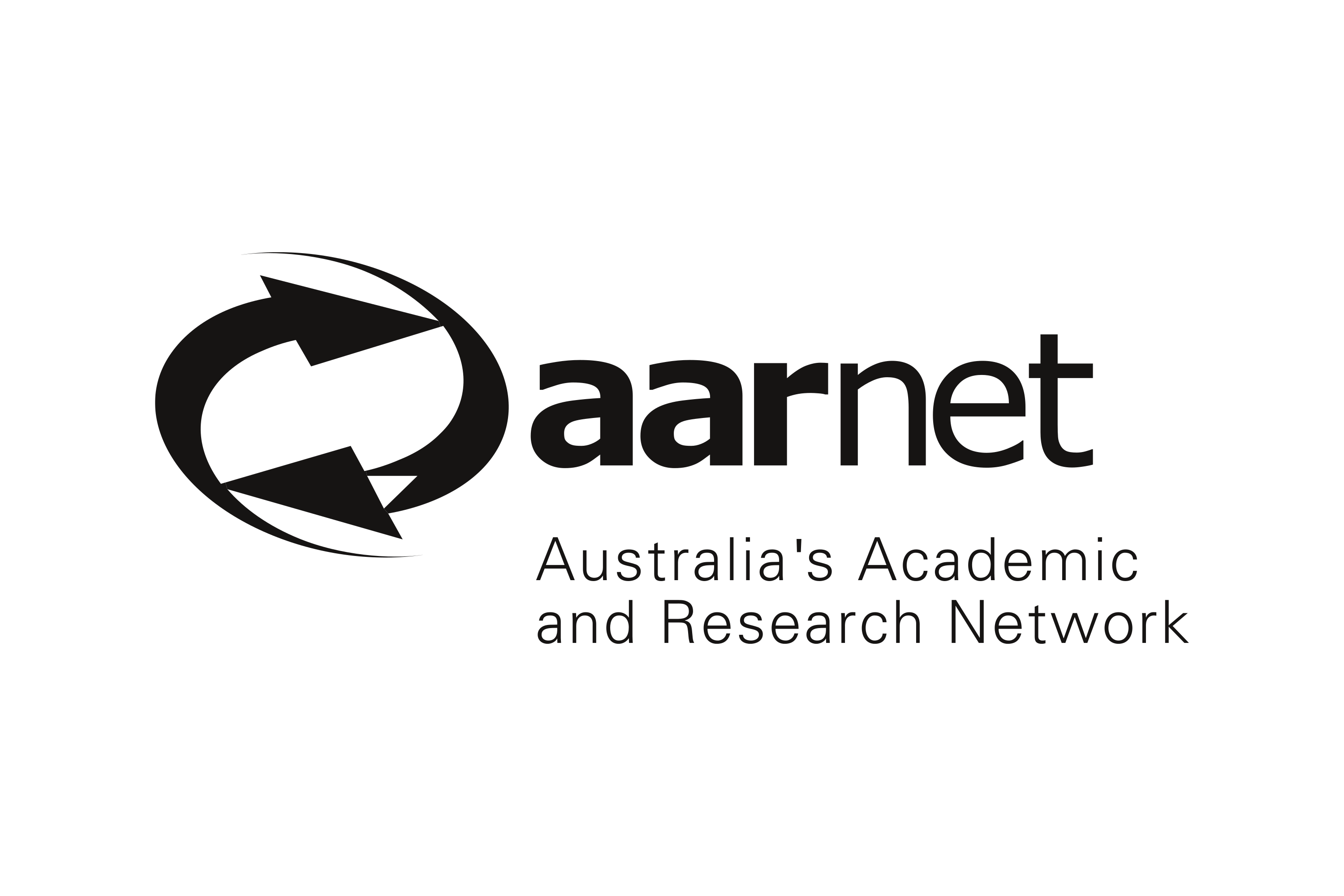
AARNet is the Australian research and education network that interconnects with the global network of National Research and Education Networks (NRENs). It provides unique information communications technology capabilities to enable Australian education and research institutions to collaborate with each other and their international peer communities.
AARNet is widely regarded as the founder of the Internet in Australia and renowned as the architect, builder and operator of world-class network infrastructure for research and education.
We connect over one million users—researchers, faculty, staff and students—at institutions across Australia, supporting education across the life-long learning spectrum and research across a diverse range disciplines in the sciences and humanities, including high energy physics, climate science, genomics, radio astronomy and the arts.
Nationally, AARNet interconnects Australian universities and Commonwealth Scientific and Industrial Research Organisation (CSIRO), and other organisations with a research and education mission, or with whom the education and research sector interacts. These include hospitals, vocational training providers, schools and museums.
Name: Steve Maddocks
Designation: Director International
Address: AARNet Pty Ltd, PO Box 5516 Chatswood NSW 1515 Australia
Email: Steve.Maddocks AT aarnet.edu.au
Phone: +61 2 6222 3530

Member Name: APAN-BD
Organization: Bangladesh Research and Education Network
Acronym: BdREN
Category: Primary (Voting) Member
Address: UGC Bhaban, Plot: E-18/A Agargaon Administrative Area Sher-e-Bangla Nagar, Dhaka-1207 Bangladesh
Mailing List: apan-bd AT bdren.net.bd
Website: http://www.bdren.net.bd/
University Grants Commission (UGC) of Bangladesh, On behalf of the Ministry of Education (MoE), is currently implementing the Bangladesh Research and Education Network (BdREN) under HEQEP with assistance from World Bank. It will be a high performance data Communications network providing connectivity among education and research institutions in both public and private sectors.
BdREN with its multi-gigabit capability aims to connect all universities, research institutions, libraries, laboratories, healthcare and agricultural institutions across the country and to support geographically dispersed academics, scientists and researchers with reliable access to high-end computing, simulation tools and datasets. With a view to implementing the BdREN backbone, recently UGC has made an IRU contract withPower Grid Company of Bangladesh (PGCB) Ltd. for its country-wide OPGW network. Backbone network of BdREN will be designed based on this optical fiber.
BdREN will also be connected with other regional and trans-continental Research and Education Networks (RENs)(e.g., TEIN3). It will link the faculties and students of Bangladesh to the global academic community and learning resources.
It will also facilitate international collaborative research and will catalyze innovation in the country.
BdREN will eventually be operated by a Non-profit Trust organization with a board of trustees consisting of representatives from the universities/user communities, UGC, MoE and other members co-opted for their expertise and position in relevant organizations.
Contacts:
Administrative
Name: A.K.M. Habibur Rahman
Designation: Chief Executive Officer, BdREN
Address: Plot: E-18/A, UGC Bhaban, Agargaon, Sher-E-Bangla Nagar, Dhaka-1207, Bangladesh.
Email: ceo AT bdren.net.bd
Phone: +88 09612 110022
Secretariat
Name: Mohammad Tawrit
Designation: Chief Technical Officer, BdREN
Address: Plot: E-18/A, UGC Bhaban, Agargaon, Sher-E-Bangla Nagar, Dhaka-1207, Bangladesh.
Email: cto AT bdren.net.bd
Phone: +88 09612 110033
NOC
Name: Md. Ariful Islam
Designation: Manager, Communications, BdREN
Address: Plot: E-18/A, UGC Bhaban, Agargaon, Sher-E-Bangla Nagar, Dhaka-1207, Bangladesh.
Email: arif AT bdren.net.bd
Phone: +88 09612 110040
NOC
Name: BdREN Helpdesk
Email: helpdesk AT bdren.net.bd
Phone:
+88 09612 110099

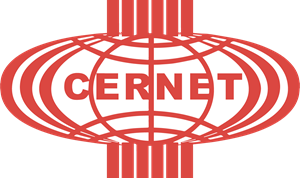
The APAN China Consortium (APAN-CN) was established in 1999. The China Education and Research Network (CERNET) and the China Science and Technology Network (CSTNET) are the two main advanced networks in China. CERNET and CSTNET aim to
- establish a national advanced network testbed
- provide a high performance network platform to domestic universities, research institutes and educational entities
- develop advanced network technology and application services,
- expand international joint research and collaboration with global education and research communities
Member:
APAN-CN Coordinator:

The Hong Kong Academic and Research NETwork (HARNET) is an advanced network infrastructure built to facilitate the exchange of information for academic, educational, research, collaborations and other official purposes of JUCC Full Members, the eight government-funded universities in Hong Kong. It links up the campus networks of the JUCC members and connects them to the global Internet.
HARNET is operated and managed by the JUCC (Joint Universities Computer Centre) with a mission to promote the development, deployment, operation and technology transfer of advanced network infrastructure for innovation, research and educational excellence in Hong Kong. As a commitment to the community, the JUCC also provides HARNET network connection services to non-profit-making organization of academic or research nature. Other than the eight Full Members, there are also four HARNET Network Members.
The HARNET backbone is a dual plane DWDM with ROADM technology Optical solution connecting dual HARNET data centres located at The University of Hong Kong (HKU) and The Chinese University of Hong Kong (CUHK) with all JUCC full members.
Name: John Hui
Address: Office of the Chief Information Officer, The Education University of Hong Kong, Tai Po, New Territories, Hong Kong
Email: director AT jucc.edu.hk
johnhui AT eduhk.hk
Phone: +852 2948 7048
Address: Information Technology Services Center, The Hong Kong University of Science and Technology, Clear Water Bay, Kowloon, Hong Kong
Email: samuel.kwan AT hkust.hk
Phone: +852 2358 6182
Name: Ivy Yip
Address: JUCC, c/o ITS, The University of Hong Kong, Pokfulam Road, Hong Kong
Email: ivy.yip AT jucc.edu.hk
Phone: +852 3549 5306
Name: Cindy Hui
Address: JUCC, c/o ITS, The University of Hong Kong, Pokfulam Road, Hong Kong
Email: cindy.hui AT jucc.edu.hk
Phone: +852 3549 5308

Education & Research Network (ERNET), India is an autonomous Scientific organization under the administrative control of the Ministry of Electronics & Information Technology (MeitY), Government of India. ERNET India has been serving institutions in various sectors namely, health, agriculture, higher education, schools and science & technology. ERNET India is helping to create a truly global research community where advanced resources and new learning can be effectively shared. ERNET network is a judicial mix of terrestrial and satellite based wide area network. ERNET Network Supports IPv4 and IPv6 Internet protocol in dual stack. IPv6 routing protocol OSPFv3, end-to-end Ethernet services, QoS , Video Conferencing, authentication and authorization have also been implemented on ERNET network.

At the APEC Tsukuba conference in March, 1996, during the process of submitting an application for funding from National Science Foundation, USA for a trans-Pacific backbone network, the need for an Asia-wide research and education network was identified. APAN was established in Tokyo in June, 1997, and Professor Kilnam Chon of Korea became its first Chair.
APAN-JP was formerly organized soon after the birth of APAN in 1997. Members of APAN-JP have held key positions in APAN working groups, NOC and the Secretariat.
The membership of APAN-JP include the government-based link owners as the primary members. In addition, academia as well as industries support its activities, especially for research & development, network operation and international collaborations.
Japan accounts for the maximum number of participants as well as the presentations at APAN meetings. APAN-JP also is capable and willing to help international projects related to international human relations, stable operation of advanced networks, etc.

Address: KISTI/KREONET Center, 245 Daehak-ro, Yuseong-gu, Daejeon, 34141, South Korea
Email: bscho AT kisti.re.kr
Phone: +82 42 869 0584 (land)
+82 10 4192 8992 (mobile)
Name: OSIA (Open Standards and ICT Association)
Address: Seocho-daero 78-gil, Seocho-gu, Seoul, 06626, South Korea
Email: sec AT osia.or.kr
Phone: +82 2 562 7041 (land)
![]()
The Lanka Education And Research Network is the NREN (National Research and Education Network) of Sri Lanka, which interconnects Educational and Research institutions across the country, and provide network related services to them.

Launched in March 2005, under the governance of Ministry of Higher Education (MoHE) and management of Malaysian Digital Economy (MDEC), formally known as the Multimedia Development Corporation, the Malaysian Research & Education Network (MYREN) enables high speed dedicated connectivity to the education sector while expanding research capability in Malaysia.
A community managed network through its 7 regional Point of Presence (PoPs) nationwide, it has linked to over 800 thousands researchers, academicians and students in Malaysia enabling closer collaboration to underpin critical applications, education and research activities across the country. MYREN has thus far connected all public universities, private universities, all polytechnics and college communities, a few hospitals and a few research institutes in the country. MYREN continues to attract research institutes, private universities, colleges and hospitals in Malaysia.
MYREN is linked to other National Research and Education Networks (NRENs) via the Trans-Eurasia Information Network (TEIN4) since 2006 which offers Asia Pacific a gateway for global collaboration, enabling over 50 million users and more than 8000 research and academic centers to participate in joint projects with peers in Asia, Europe, United States and other continents.
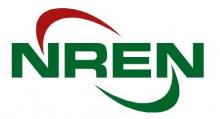
Nepal Research and Education Network (NREN) was established on February 2006 as a facilitator to support advanced research and education network through the means of information and communication technology and as a knowledge center to support good ICT initiatives and research in the country.
NREN is a non-profit organization registered under Nepal Government and affiliated with Social Welfare Council. This is a consortium in the country active to build national research and education network. It facilitates dedicated advanced research and education network for the research and education communities of Nepal.
NREN is connected to the international research communities in Asia Pacific, Europe, via the Trans-Eurasia Information Network 4 (TEIN4) and Internet2. All network members and partners of NREN get direct access to the networks like GÉANT, TEIN, APAN etc. and institutions like CERN and NASA.
NREN was constituted by the professionals working on the theme of ICT for Development. Lack of research environment and the network in terms of resources, infrastructure and access was the key motive towards the establishment of this institution. It aims to strive towards the mitigation of research backwardness via the connection with global research and education communities.

REANNZ is New Zealand’s NREN. Our role is support the nation’s research, education and innovation sectors, connecting them to each other and over 100 other NRENs globally. We were launched as the KAREN Network in 2006 but re-branded as REANNZ in 2013. REANNZ now connects all the country’s universities, research institutions, polytechnics and a number of other associated organisations.
REANNZ supplies both R&E and commodity internet routes to it’s members nationally and then connects to PoPs in Los Angeles and Sydney at 40Gb/sec. We have nationwide eduroam deployment in all universities and expertise in assisting other economies to extend that initiative within their own institutions.
New Zealand has particular expertise in a range of research areas of interest to partners in the APAN region. These include leading edge natural hazards and fisheries management research, food production and nutrition systems and large scale climate modelling programmes. We also have excellent in-house expertise in the design and deployment of SDN, perfSONAR and Science DMZs.
REANNZ staff are keen to facilitate greater connections between researchers in Asia and New Zealand and look forward to improving our links in this area.

The Advanced Science and Technology Institute (ASTI) is an attached agency of the Department of Science and Technology (DOST). With the identification of ICT as a tool to help carve the country’s niche in the global scene, ASTI as one of the government’s focal agency for R&D in ICT and Microelectronics, has been mandated to undertake long-term researches to strengthen and modernize the Philippine’s science and technology infrastructure; conduct R&D work in the advanced fields of studies; and complement the overall endeavor in the scientific field with intensive activities in the computer and information technologies.
DOST-ASTI also manages Philippine Research Education and Government Information Network (PREGINET) as the only national research education network (NREN) in the Philippines and the Philippine Open Internet Exchange (PhOpenIx) as the only neutral IX in the country.
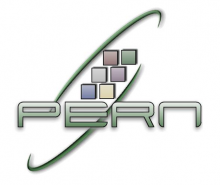
The revolutionary Pakistan Education & Research Network (PERN) is a nationwide educational communicational network connecting premier education and research institutes; and providing high-speed R&E, intranet as well as internet bandwidth across the country and to international networks. The purpose of this education network is to provide communication infrastructure to the universities, institutions of higher learning and research organizations to meet their networking and internet requirements. The network is providing valuable services, like high-speed internet, audio/video conferencing, access to digital library resources, cloud services, Educational Roaming & Blanket Coverage of WIFI in Smart University Project Campus widely.
The PERN is also in process of upgradation to ultra-high-speed backbone network that will provide 40Gbps of back bone connectivity by interlinking 50 Cities across the country and territorial network partners. This powerful digital infrastructure connects country to national and global data, tools, colleagues, and classrooms that fuel the engine of innovation in today’s digital economy. More than 800,000 researchers at nearly 300 Pakistani universities, colleges, research institutes, hospitals, and government laboratories are using of this network, across country.

Singapore Advanced Research and Education Network (SingAREN) is Singapore’s national research and education network. It is the sole provider of local and international networks dedicated for serving the Research and Education (R&E) community in Singapore.
SingAREN’s key objectives are:
- Advocate and champion advanced network applications and technology in Singapore.
- Be the platform of collective representation of the community of research and education networks (REN) in Singapore.
- Facilitate cost-competitive adoption of advanced Internet technologies for Singapore RENs.
SingAREN’s members consist of the Institutions of Higher Learning, Research Organizations, Government and network industry players.
SingAREN Open Exchange (SOE) interconnects Singapore’s research and education community to the international Research and Education Networks including Asia, Australia, Europe and the U.S., ranging from bandwidths between 1 Gbps to 100 Gbps.
Besides advanced internet connectivity, SingAREN offers value-added services, including eduroam and Singapore Access Federation (SGAF). SingAREN facilitates high-speed transfers of large datasets across international boundaries for scientific research, and enables advanced network technology demonstrations through its resilient international links and high-speed fiber network.
Contacts:
Secretariat
Name: Ong Bin Lay
Address: c/o A*STAR Computational Resource Centre (A*CRC), 1 Fusionopolis Way, #17-01 Connexis South, Singapore 138632
Email: ongbl AT singaren.net.sg
Phone: +65 9685 8643
Secretariat
Name: Francis Lee
Address: School of Computer Engineering, Nanyang Avenue, Singapore 639798
Email: ebslee AT ntu.edu.sg
Phone: +65 6790 5371
NOC
Name: SingAREN NOC
Email: noc AT singaren.net.sg
NOC
Name: Stanley Goh
Email: ccgoh AT singaren.net.sg
NOC
Name: Simon Green
Email: simonpetergreen AT singaren.net.sg
NOC
Name: Francis Lee
Email: ebslee AT ntu.edu.sg

Thailand Research Education Network Association has been established since 2007 to coordinate among researchers and users of research and education networks, as well as promote/support research projects and activities. There are many activities and collaborations, for example: Tele-Medicine, Distance Learning, Reference Database & E-Book, Thailand Library System Network, Thailand Union Catalog, Thailand Cyber University and High Performance Computing

The mission of APAN-TW is to provide an e-infrastructure and promote international e-Science collaboration for our research and academic community. Related activities include the coordination of international network operations, advanced network and application research and promotion of global e-Science collaboration.
Starting from 1991, Academia Sinica pioneered the first international research network across the region, and has continued leading the major international Internet link upgrade of the Research and Education (R&E) networks. We built the Taipei GigaPoP dark-fiber infrastructure and our second-generation Research/Education international backbone from T1 to T3 in 1997, which enabled us to become an important player in International Academia Networking. In 1998, we built the first and only R&E optical fiber network in Taipei City. The regions first 10G Research Network to Europe was established under the leadership of Academia Sinica in 2007. Currently, Academia Sinica has 2x10G direct connection to USA and Europe as well as 10 G to Hong Kong. The 100G island-wide backbone has been establish in 2016 as well. Up to now, disk-to-disk in-bound traffic between ASGC and Europe has reached to 16Gbps which is the highest record in history.
Since 2004, Academia Sinica has been responsible for the APGI (Asia Pacific Gird Initiative) in a serial of e-infrastructure projects under the support of European Commission. We assisted 30 sites in Asia Pacific region to join the global e-Science collaboration. Since the domain of e-Science collaboration in Asia such as earthquake, tsunami, typhoon, flood and pandemic are regional issues and cannot be dealt with by individual countries alone, therefore, it takes experts of the region from different scientific disciplines, simulation, networking, grids and clouds to mitigate the disasters of the region together. Working with scientists of various disciplines, we successfully lead e-Science applications in Asia from High Energy Physics, Biomedicine, Bioinformatics, Earth Sciences, Climate Change, Digital Archives to Social Sciences.
Collaborating with other APAN partners such as APAN-PH, APAN-TW established the Disaster Mitigation Working Group in 2016. The goal of this working group is to facilitate international collaborations to improve the disaster mitigation capability by e-Science among Asia Pacific region. It aims to encourage the knowledge sharing via various case studies, to provide Application and Data Services and to engage user communities in Asia Pacific countries.
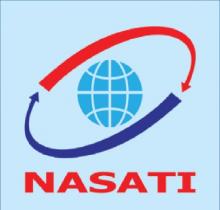
The National Agency for Science and Technology Information (NASATI)
is an administrative agency under the Ministry of Science and Technology, which advises and assists the Minister to fulfill State management functions and organize activities of S&T information, libraries, statistics, development and exploitation of the national database on science and technology.
The Agency has an international transaction name of National Agency for Science and Technology Information, abbreviated as NASATI.
Vietnam research and education network (VinaREN)
is a national research and education network of Vietnam. VinaREN’s goals are to facilitate and coordinate the establishment, development, deployment, operation and technology transfer of advanced network based applications and network services to improve effectiveness and to further national and international collaboration in research and education. VinaREN has been developed and managed by the National Agency for Science and Technology Information (NASATI). VinaREN now links with International Networks (TEIN4) at 1 Gbps. At the 23rd APAN Conference, Vietnam was officially joined APAN, and NASATI/VINAREN became a primary member of this network. VinaREN was a member of TEIN2/3 since 2012 and now is a member of TEIN4.
VinaREN connects more than hundred leading universities, research institutions, hospitals in the country and proactively fosters e-learning, telemedicine, grid computing, e-culture and weather forecasting, and so on.
Associate Members
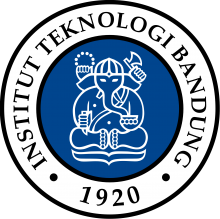
Institut Teknologi Bandung (ITB) or Bandung Insitute of Technology or Institute of Technology Bandung, was founded on March 2, 1959. The present ITB main campus is the site of earlier engineering schools in Indonesia. Although these institutions of higher learning had their own individual characteristics and missions, they left influence on developments leading to the establishment of ITB.
In 1920, Technische Hogeschool (TH) was established in Bandung, which for a short time, in the middle forties, became Kogyo Daigaku. Not long after the birth of the Republic of Indonesia in 1945, the campus housed the Technical Faculty (including a Fine Arts Department) of Universitas Indonesia, with the head office in Jakarta. In the early fifties, a Faculty of Mathematics and Natural Sciences, also part of Universitas Indonesia, was established on the campus.
In 1959, the present lnstitut Teknologi Bandung was founded by the Indonesian government as an institution of higher learning of science, technology, and fine arts, with a mission of education, research, and service to the community.
According to The Law (UU no 12 tahun 2012) and the government Act on 2012 (PP no 65 tahun 2012) The Decision on ITB as Legal Enterprise own by public (Badan Hukum) has opened a new path for ITB to become autonomous. The status of autonomy implies a freedom for the institution to manage its own bussiness in an effective and efficient way, and to be fully responsible for the planning and implementation of all program and activity, and the quality control for the attainment of its institutional objective. The institution has also freedom in deciding their measures and taking calculated risks in facing tight competition and intense pressures.

Organization:
TransPAC / Indiana University
Acronym: TransPAC
Category: Associate Member
Website: https://internationalnetworks.iu.edu/
The TransPAC project is a more than two decades-long collaboration in the Asia-Pacific region to improve networks in support of research and education, primarily funded by the US National Science Foundation. It supports not only transoceanic capacity but also provides services to advance large-scale international research efforts. It a cooperative partnership with the Asia Pacific Advanced Network (APAN), the Trans-Eurasia Information Network (TEIN), and the Asia Pacific Oceania Network (APOnet).The R&E networks included in the TransPAC Collaboration cover all of Asia.
Contacts:
AdministrativeAdministrative
Administrative
Administrative
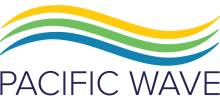
Pacific Wave is a wide-area advanced networking facility that is designed to provide research and education networks throughout the Pacific Rim and the world with access to separate but interrelated state-of-the-art peering and exchange, ‘Science DMZ’, Software Defined Exchange (SDX) and Software Defined Networking (SDN) capabilities. Pacific Wave includes the following services on their own dedicated but interconnected wavelengths:
- A distributed, fully open, peering and exchange fabric with access points on a 100g backbone that spans Seattle, Sunnyvale and Los Angeles to which nearly all Pacific Rim R&E networks connect and which is in turn interconnected with all USA R&E backbones including Internet2 and ESnet (each with multiple 100g connections) as well as the major cloud providers and international ISPs;
- A wide-area Research DMZ platform with a dedicated 100g backbone among Los Angeles, Sunnyvale and Seattle and also access in Tokyo (at WIDE/T-REX and Tata pops), Denver, Albuquerque, El Paso and Chicago (at StarLight) via shared 100g wavelengths
- A dedicated SDX capability with its own 10g wavelength providing access at Pacific Wave’s Seattle, Sunnyvale and Los Angeles nodes and interconnecting with StarLight’s SDX testbeds in Chicago
- A dedicated SDN testbed capability with its own 10g wavelength with access at Pacific Wave’s Seattle, Sunnyvale and Los Angeles nodes
Pacific Wave is a joint project of CENIC, the Corporation for Education Network Initiatives in California, and the Pacific Northwest Gigapop (PNWGP), and is operated in collaboration with the University of Southern California and the University of Washington. It is the official USA National Science Foundation funded interconnection and peering facility and SDX exchange for Pacific Rim networks.
Affiliate Members

The WIDE project is the research consortium with more than 100 companies, research institutes and universities. Members are mainly from Japan but some worldwide members are actively involved. The WIDE project is conducting various researches related to the Internet technology and Internet society among over 500 researchers in Japan, collaborating with foreign researchers from all over the world. The WIDE project operates the Internet Testbed “WIDE Internet”, with highly advanced technology shared by researchers in the world where variety of experimentation and demonstration are conducted.
The basic philosophy of the WIDE Project lies in the provision of a global connection between computers and all other equipment and the construction of a distributed system that will serve a useful purpose from an individual and social viewpoint and to bring to the fore the relative issues and problems in order to bring this to fruition. We have held this philosophy since the project was launched in 1988 to the present day amidst remarkable developments in network technologies. The Project aims to construct a highly public information infrastructure that will contribute to society in a variety of fields including medicine, finance, education and law.
The research that the WIDE Project is undertaking on the physical layers of Internet infrastructure can be likened to the water that cultivates vegetation in the soil. Although not visible on the surface, the results of our research are permeating through to and have great potential in all aspects of network environments. Just a few examples include the operation of the M Root DNS Server, forming the Internet backbone of the Asia-Pacific region, and the world’s first undertaking of IPv6 (Internet Protocol version 6). We are reaching into territories that go beyond that of the organizational boundaries of corporations and universities into the networking of a variety of fields that only an interdisciplinary research network can achieve.

ICT4Dev aims to help improve quality of life and help reduce poverty in the developing world through Information Communication and Technology. Our misson is to get people access to the communication, applications and its infrastructure where there is none or it is unaffordable. We will help at the grassroots level through the use of digital tools to informative society and develop their community in developing world. Our organization is present in USA and Nepal.
We collaborate with researchers in both developed nations and developing nations such as those in South Asia to meet and freely exchange ideas, best practices, recent developments, etc with any part of Developed world. We also extend the above concept to an online space for South Asian researchers to share their experiences amongst themselves as well as to solicit input from their counterparts from developed nations. This amalgamation of online meeting space and real life interaction can lead to a continuous Knowledge Sharing experience. Provide field research, ground level of study to respective research teams a platform to get directly involved in formulating a needs analysis presentation. Then we help build infrastructure and application in the particular areas through gap analysis. Once that settle then we serve train trainers and guidance for sustain the project. We deliver our project as a Private-Public-Partnership (PPP)model. The projects through ICT that we are focus on these areas; Agriculture, Health Systems, Livestock, Power Stations, Sanitation Systems, Communication Systems, Transportation Systems, Government Services, Climate Monitoring Systems, Early Warning Systems (for Disaster Management), etc. related to Public information systems use and current status of information dissemination.
Name: Prashant Manandhar
Designation: International Relationship Director
Email: [email protected]
Designation: Executive Director
Address: Jawlakhel, Lalitpur Nepal
Email: [email protected]
Liaison Members
![]()
The eHATID LGU project (eHealth TABLET for Informed Decision Making of LGUs) is one of the eHealth and Community Empowerment through Science and Technology (CEST) projects of Philippine Council for Health Research and Development (PCHRD) of the Department of Science and Technology (DOST) with Ateneo De Manila University.
It provides health Information system and decision-making support to LGUs through an Electronic Medical Record (EMR) that generates particular health reports for the Department of Health (DOH) and the Philippine Health Insurance Corporation (PhilHealth). It aims to improve efficiency and transparency among stakeholders using an enhanced health information system (HIS) model that promotes health information convergence and informed decision-making.
The project supports and is compliant with the information technology requirements of the PhilHealth Outpatient Benefit Package Plus (OPB+) otherwise known as the TSeKAP – Tamang Serbisyo para sa Kalusugan ng Pamilyang Pilipino. The TSeKAP will cater primarily to the Pantawid Pamilyang Pilipino Program (4Ps) beneficiaries
MOU Partners
- CONNECT2SEA Project
- Pacific Rim Applications and Grid Middleware Assembly (PRAGMA)
- University Corporation for Advanced Internet Development (UCAID)
- MAGIC Project
- Asia & Pacific Internet Association Ltd (APIA)
- Asia Pacific Network Information Centre (APNIC)
- Arab States Research and Education Network (ASREN)
- Global Ring Network for Advanced Applications Development (GLORIAD)
- University Corporation for Advanced Internet Development (Internet2)
- National Institute of Information and Communications Technology of Japan (NICT)
- TEIN*CC ( Asi@Connect)
- Trans-European Research and Education Networking Association (TERENA)
- Wireless World Research Forum (WWRF)
- Joint Universities Computer Centre (JUCC)
- Global Open Data for Agriculture and Nutrition (GODAN)
- Nokia Solutions & Networks
- APAC IPv6 Council
If you wish to become a member, please contact the APAN Secretariat
